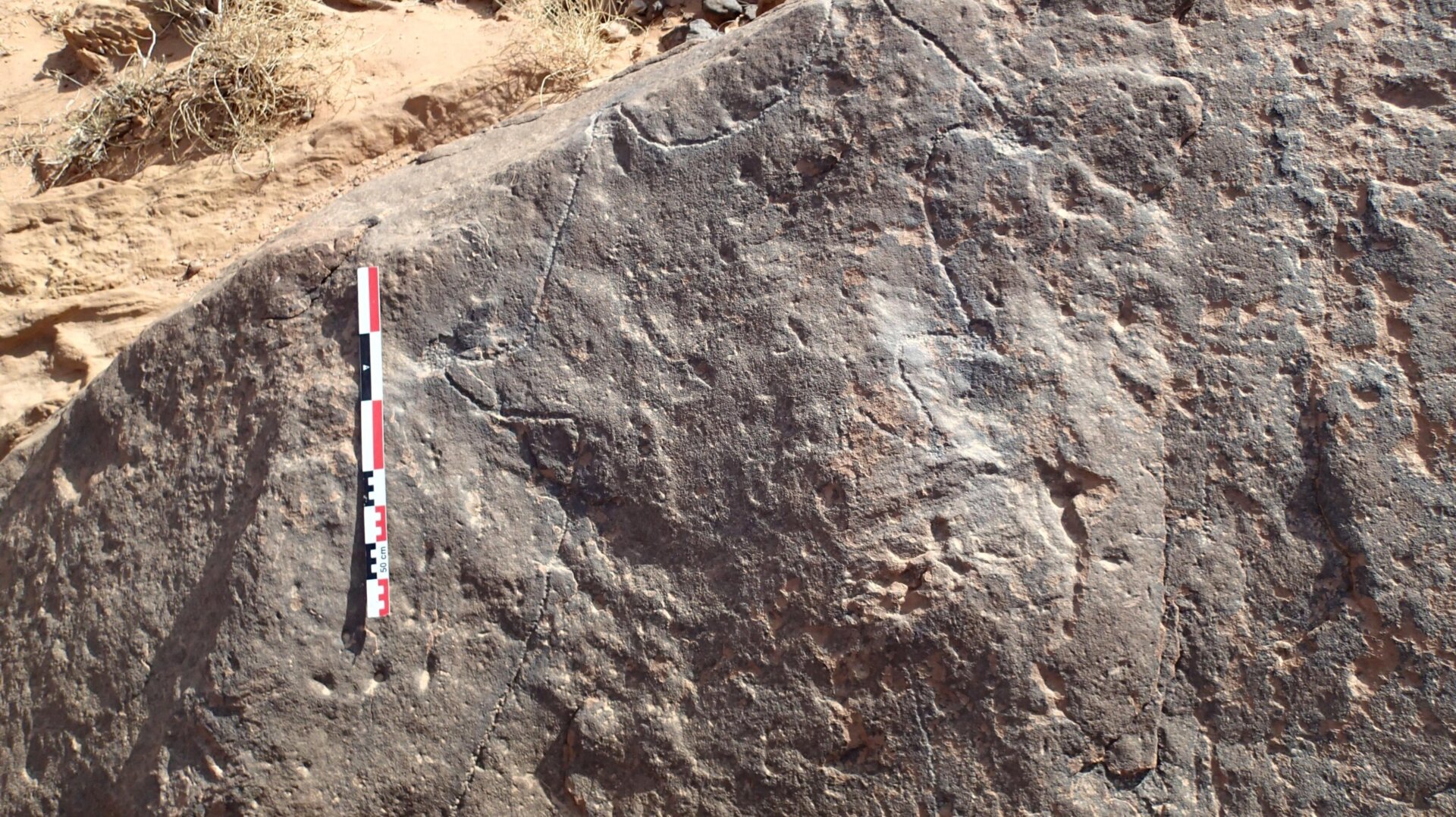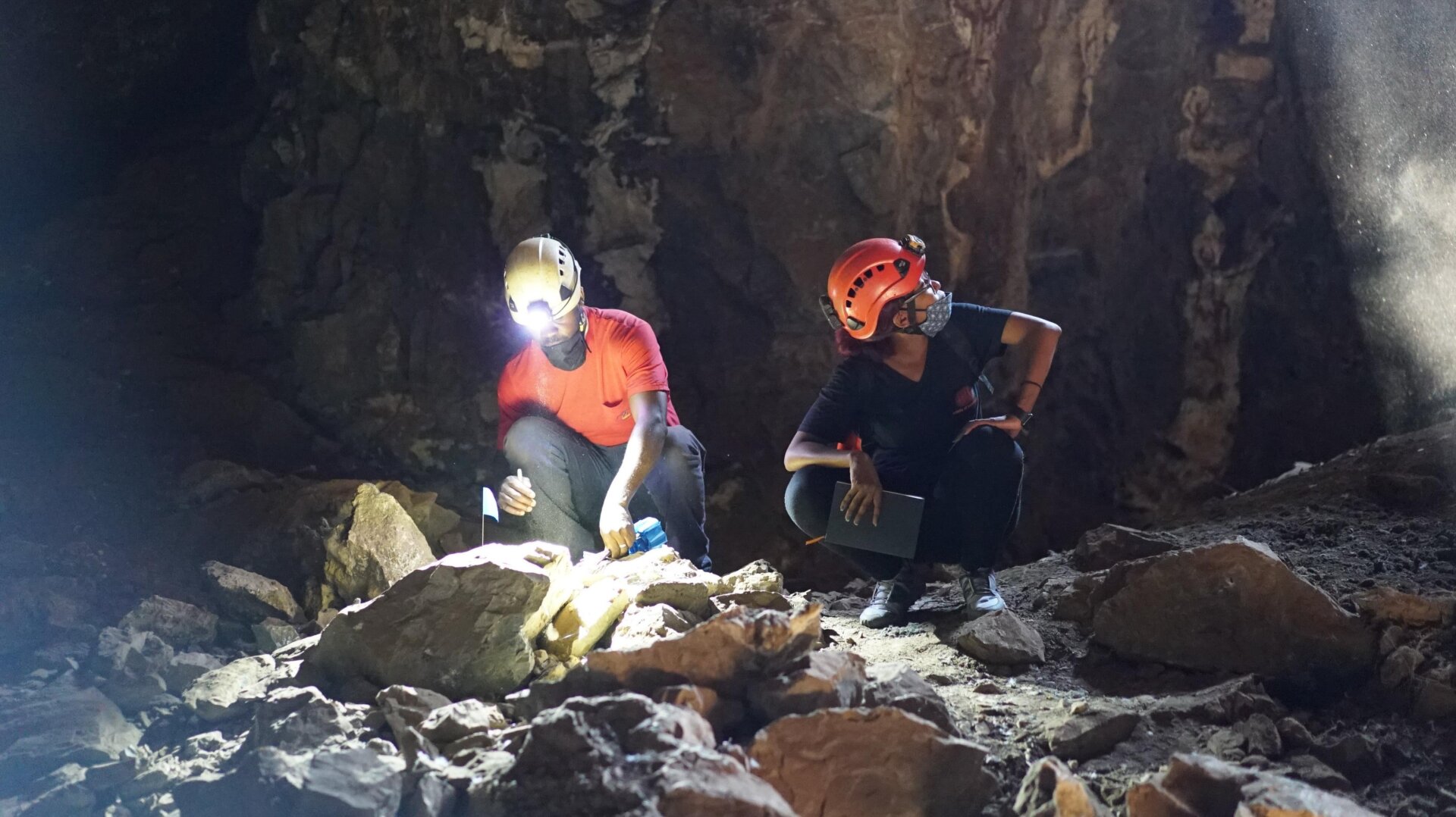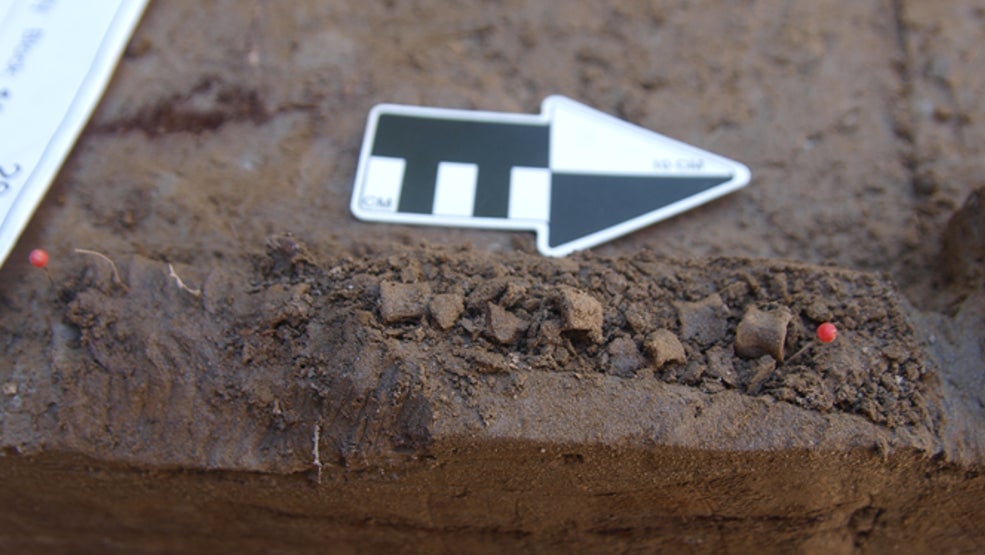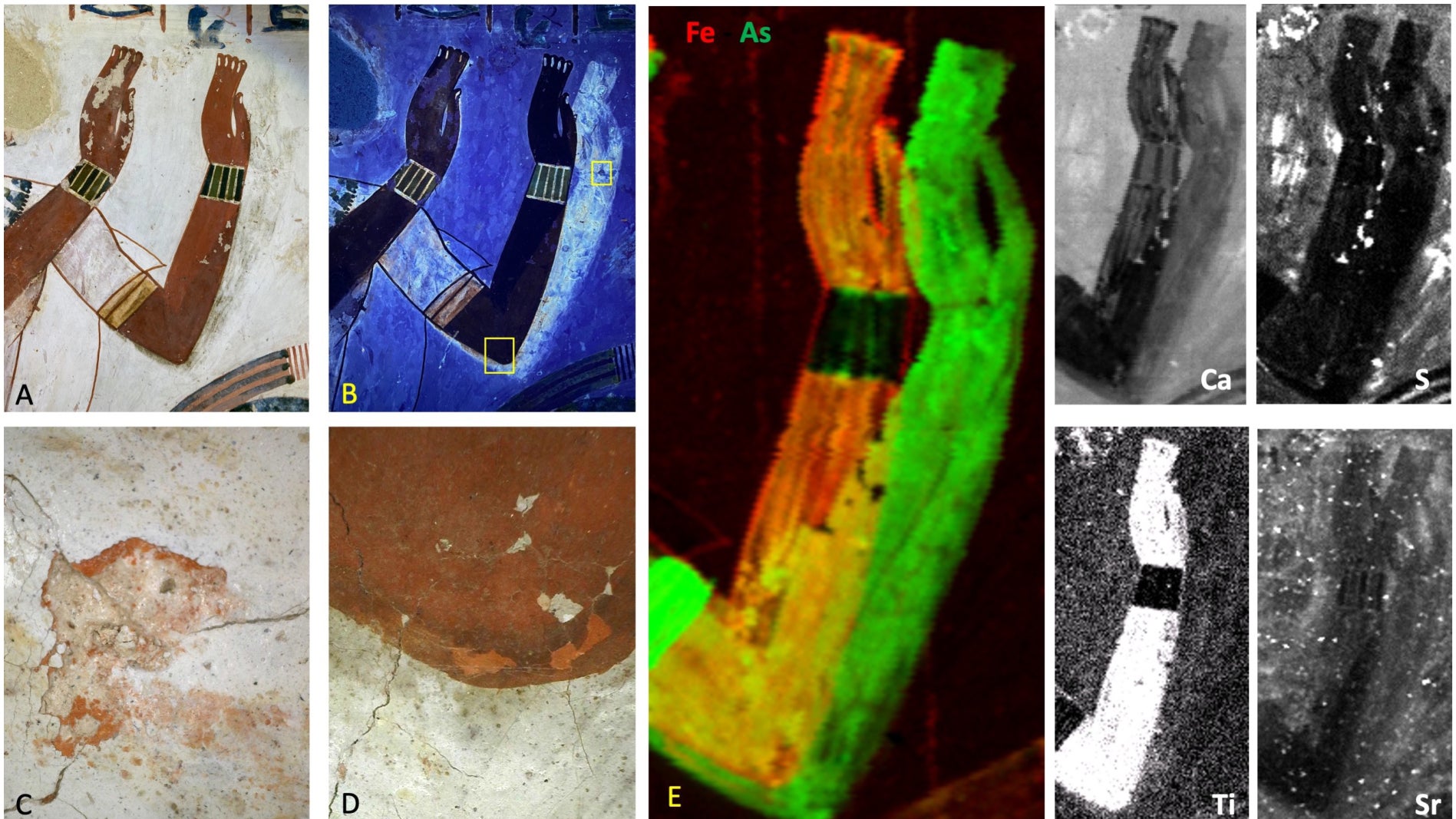Thousands of years ago, ancient inhabitants of present-day Saudi Arabia and Jordan developed ingenious hunting techniques, evidenced by recently analyzed rock carvings. These carvings depict scaled plans of massive animal traps known as desert kites, demonstrating a significant leap in human cognitive and engineering abilities.
Researchers from CNRS discovered two such aerial-view plans etched into rock faces, located approximately 267 kilometers apart. Both etchings are estimated to be between 7,000 and 8,000 years old, showcasing the early development of scaled architectural representation. The Jordanian carving measures 80 centimeters by 32 centimeters, while the Saudi Arabian etching is considerably larger at 382 centimeters by 235 centimeters. These findings are detailed in a study published in PLOS ONE.
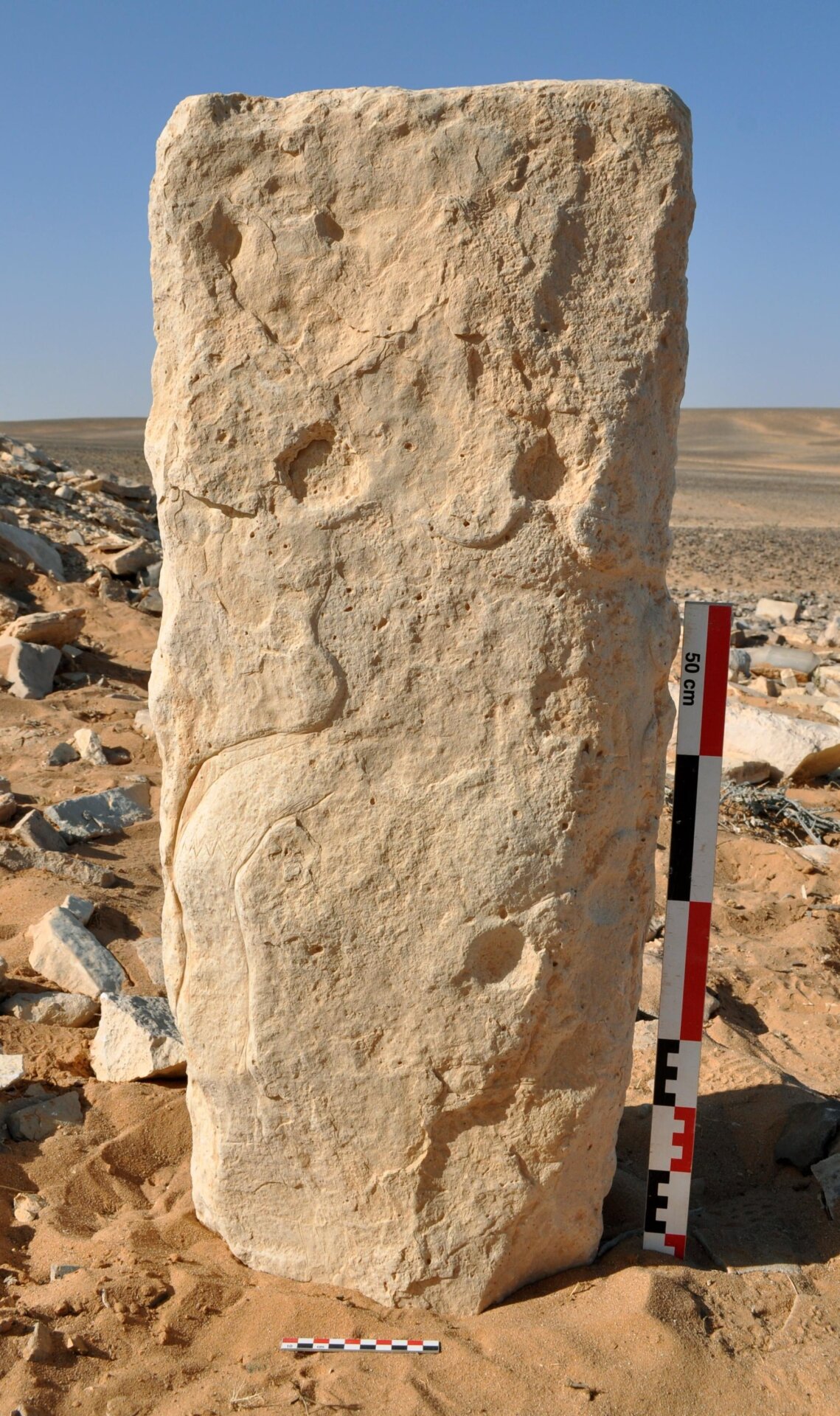 The etched rock face found in Jordan.Detailed rock carving in Jordan depicting a desert kite layout. Image: SEBAP & Crassard et al. 2023 PLOS ONE
The etched rock face found in Jordan.Detailed rock carving in Jordan depicting a desert kite layout. Image: SEBAP & Crassard et al. 2023 PLOS ONE
The remarkable resemblance between the rock carvings and actual desert kite structures led researchers to recognize the etchings as scaled blueprints. “We were immediately surprised by the similarity of the drawing with the hunting desert kite structures,” explained study author Olivier Barge. “That’s how we realized that the engravings were actually accurate plans at scale.”
Desert kites are large-scale trapping systems constructed from stone walls and pits, designed to funnel and capture animals. These structures, discovered as early as the 1920s, are prevalent throughout the Middle East, with thousands having been documented. The rock etchings, discovered in 2015 by study author Wael Abu-Azizeh and colleagues, predate the discovery of the corresponding physical kites in Saudi Arabia (2014) and Jordan (2013). The research team, including Rémy Crassard, Olivier Barge, and Wael Abu-Azizeh, analyzed photographs and created digital models of the carvings, comparing them to satellite imagery of known kite structures. This analysis confirmed the connection between the etched plans and nearby desert kite structures.
“The fact that it is only from looking at the satellite imagery that we were able to recognize that the features observed in the field were part of a desert kite layout is interesting in itself,” Barge noted. “It reminds [us] how these large scale features are difficult to perceive from the ground, in view of their large size and their intricate topographical setting.”
 Aerial view of a desert kite structure.Aerial perspective of a desert kite, highlighting its scale and complexity. Image: SEBAP & Crassard et al. 2023 PLOS ONE
Aerial view of a desert kite structure.Aerial perspective of a desert kite, highlighting its scale and complexity. Image: SEBAP & Crassard et al. 2023 PLOS ONE
While these Middle Eastern desert kites are impressive examples of ancient engineering, they are not the oldest known hunting structures. Archaeological discoveries near Mexico City have unearthed 15,000-year-old pits containing butchered mammoth bones, believed to be intentionally constructed mammoth traps. These findings highlight the diverse and innovative hunting strategies developed by ancient civilizations across the globe.
These discoveries of ancient desert kite plans offer valuable insights into the sophisticated hunting practices and cognitive abilities of early humans in the Middle East. The ability to conceptualize and create scaled representations of complex structures marks a significant milestone in human intellectual development.



